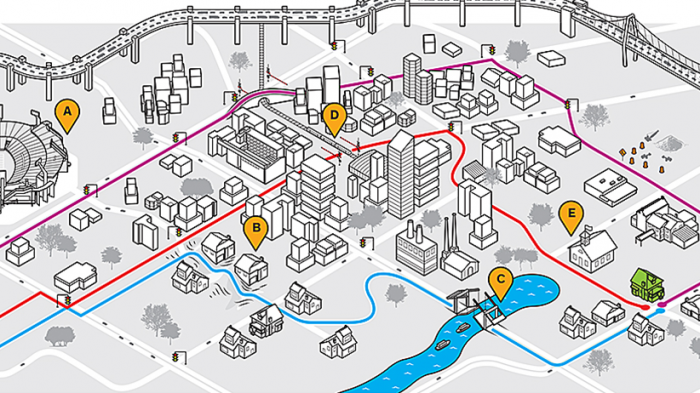There’s always been a debate on the impact of Artificial Intelligence (AI). AI has its pros and cons likewise any other technology. Irrespective of the subject the negativity surrounding goes viral in no time. Let me take you on a ride through a funny yet strange AI story.
A couple of years ago, an artist found something bizarre at a demonstration of a navigation application. The application showed that there is a gigantic congested driving condition. Although there were zero vehicles out and about. The artist understood that it was the mass of individuals or the explicit number of cell phones to be the culprit. It had unintentionally fooled the application into seeing gridlock on a vacant road. The artist then went on to demonstrate this.
The Experiment
The inquiry was to produce something like this in a lot more straightforward way. The artist needn’t bother with the individuals. He simply needs their cell phones. Thus he obtained mobile phones from companions and rental organizations until he procured 99 gadgets. He piled all these in a tray. The Navigation Hack venture started.
The arrangement was straightforward. Through the span of a day, he would stroll all over a given road, for the most part aimlessly, towing his cell phone tray behind him. The impact wasn’t immediate; it took the navigation application about an hour to make up. In any case, in the long run, his tray would make a long red line in the application, demonstrating that traffic had eased back to a creep—although there wasn’t any traffic whatsoever. He had viably fooled the framework into speculating a progression of huge transports slithering to and fro.
Generally, the back end of this particular application is continuously involved in reviving the traffic information. Data from an assortment of sources are considered and accumulated at a pace time. The application team valued and encouraged this innovative criticism. The team worked on the betterment of the application after all this. The organization likewise takes note of that. The application has made no sense on how to recognize vehicles and cruisers. The organization doesn’t yet have any approach to the channel for the artist’s arrangement.
This artist isn’t the first individual to trick the navigation app. There are more innovative ways than leasing many cell phones to achieve a similar objective. In any case, to the artist, the effortlessness was the point. His approach meant to be practical and reach a wide audience rather than being too technical.
At the end of the day, the artist didn’t hack the navigation application to trick workers. Rather, he has a story to tell. What he was truly keen on by and large is the association between innovation and society and the effect of innovation and how it shapes us. This particular navigation application gives an especially illustrative case of that relationship. Besides the fact that it is a shut framework, and how it’s utilized, yet it additionally shapes the physical world. On the off chance that it gets congested driving conditions—genuine or manufactured—it may divert vehicles to less-voyaged lanes. Thus putting a strain on the foundation that wasn’t worked for the more volume. That is exactly why the artist invested a portion of his energy in one of the city’s extensions, where bottlenecks much of the time happen. Be that as it may, he additionally investigated another layer of the application’s impact, by walking his tray before the organization’s home office in the city.
Conclusion
It’s not only about grabbing the attention by demonstrating weird behaviors of products in the market, but this story has more to it. It serves as a reminder for the people and the system developers- how too much faith in their products may ultimately make fool out of them.


